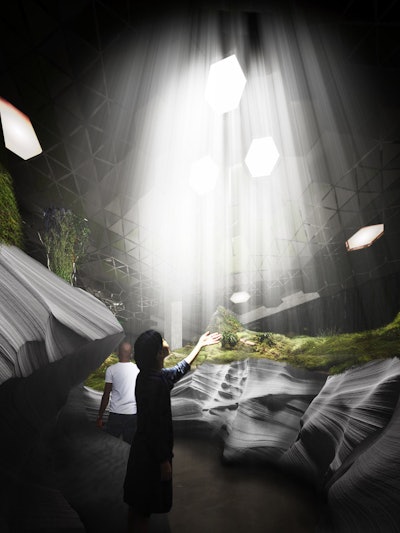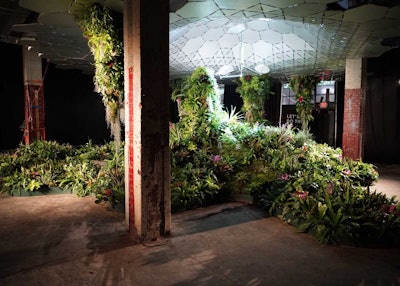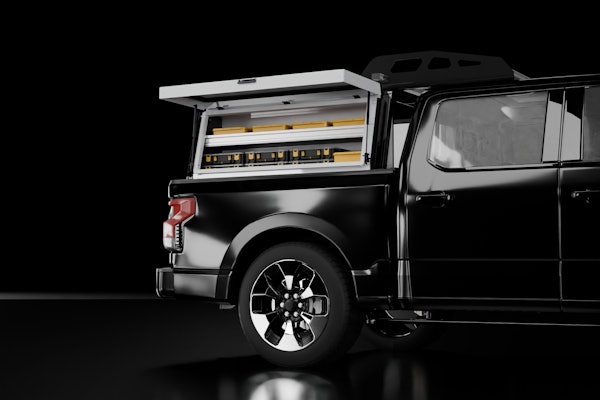 Concept art of the Lowline
Concept art of the LowlinePhoto: The Lowline
As evidenced through the recent growth in green roofs, plants can be found dominating plenty of unused urban spaces, but growing vegetation underground is a bit more complicated.
Yet, New York City has recently approved the proposed design of the world’s first underground park on the Lower East Side.
Creators and co-founders of the Lowline, James Ramsey and Dan Barasch, plan to transform the abandoned Williamsburg Bridge Trolley Terminal, which is under Delancey Street, into a one-acre park.
 The Lowline will use a system to transmit sunlight onto a reflective surface on the distributor dish underground, transmitting that sunlight into the space.
The Lowline will use a system to transmit sunlight onto a reflective surface on the distributor dish underground, transmitting that sunlight into the space.Photo: The Lowline
A system of fiber-optic cables and mirrors creates a “remote skylight” that funnels in natural sunlight to support photosynthesis. In an effort to display the project’s viability, a Lowline Lab was set up in the Essex Street Market, where the solar technology was open to the public. It has attracted more than 70,000 visitors already.
“The Lowline Lab offers a glimpse into a pioneering use of solar technology, which may help us fundamentally rethink the ways in which we can reclaim abandoned urban spaces,” Barasch told Dezeen. “It is also home to cutting-edge landscape design research – essentially ushering in a new way to study subterranean gardening.”
The park is named after the High Line, which transformed a deserted portion of railway into a popular public space in 2009.
The trolley station has been closed since 1948 and when Ramsey discovered the terminal he immediately began drawing up ideas for a below-ground park.
“Over the last eight years, we just stuck to what we thought was a great idea that could make out city and our community better,” Ramsey said. “We’re thrilled to move ahead on designing and building a pace that people will enjoy for generations to come.”
Lowline organizers now have 12 months to raise $10 million, implement a community engagement plan, and complete schematic design documents before the project can move forward and receive further approval.
 The Lowline Lab displays how the underground park will gather enough sunlight for plants to live.
The Lowline Lab displays how the underground park will gather enough sunlight for plants to live.Photo: Dezeen
The project is estimated to cost $60 million to construct and the organization hopes to finish negotiating with developers by the end of 2017. Lowline’s supporters predict it will be open to the public by 2021.
Landscaping firm Mathews Nielsen will be responsible for installing the plants in the Lowline.
Another reason why the city is welcoming this unconventional park is the recent boom on the Lower East Side and the lack of public spaces in the area for community gatherings.
“Chances to add new parks and public spaces in Manhattan’s neighborhoods are rare and priceless,” said Manhattan Borough President Gale A. Brewer. “I’m excited by the prospect of transforming the Lowline into a first-of-its-kind public space, and will work with the administration, Community Board 3, Lower East Siders, park advocates and the design community to make the most of this opportunity.”









